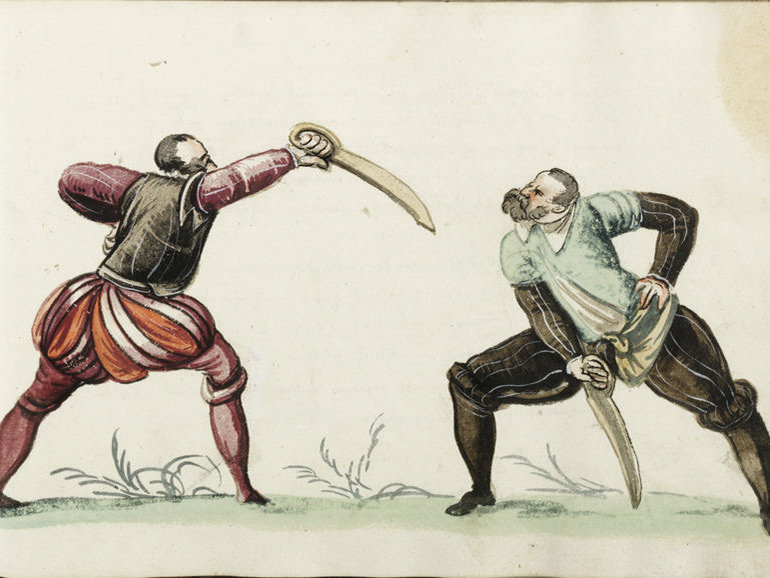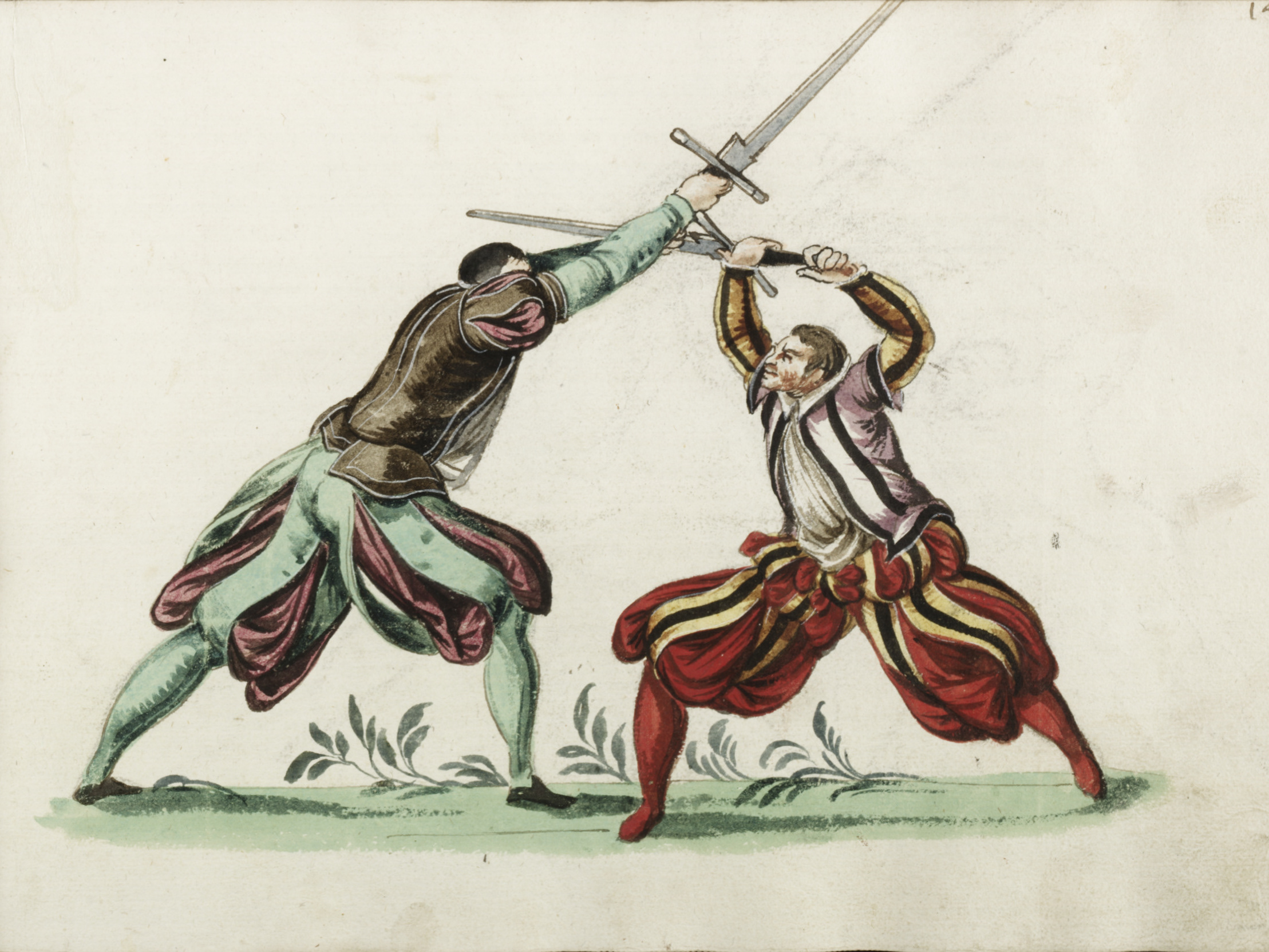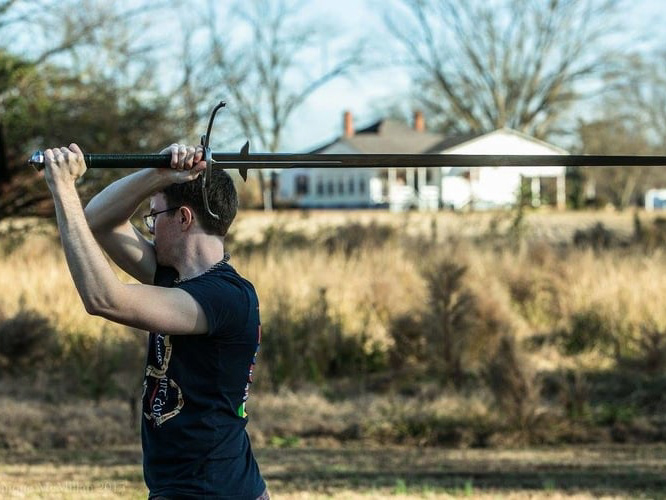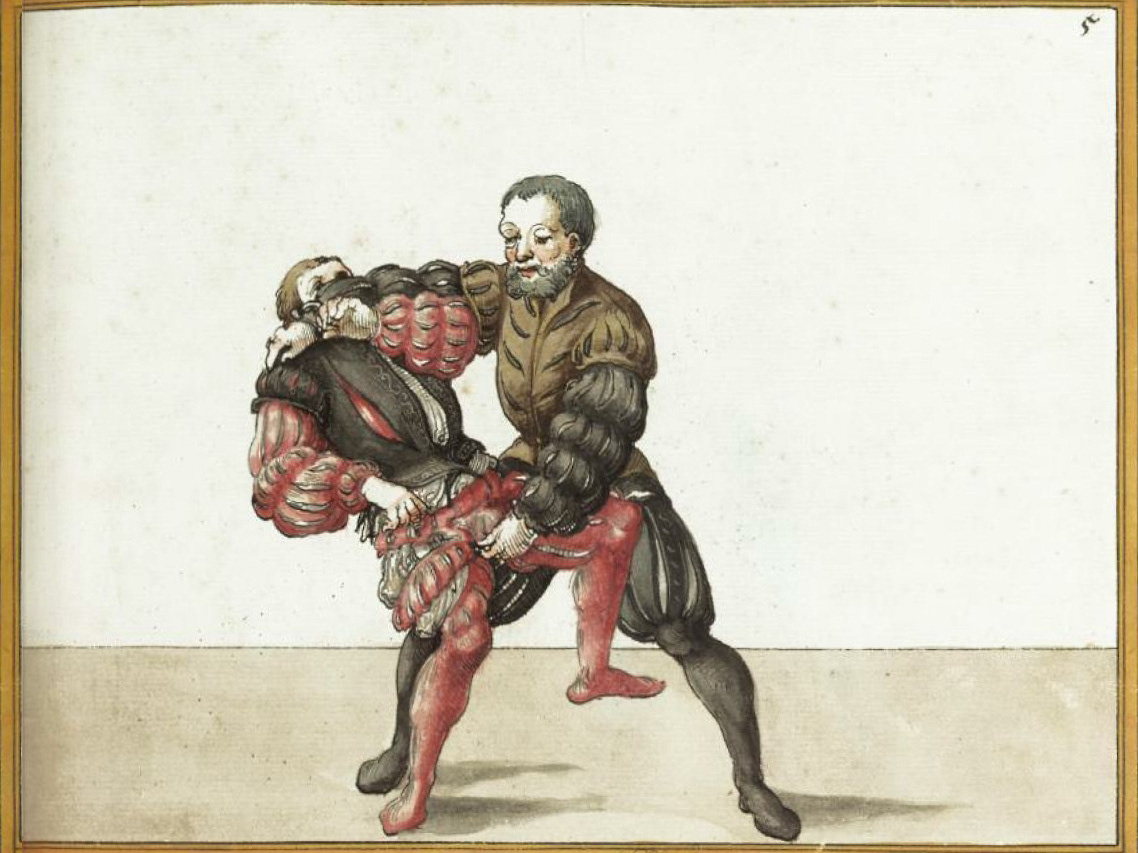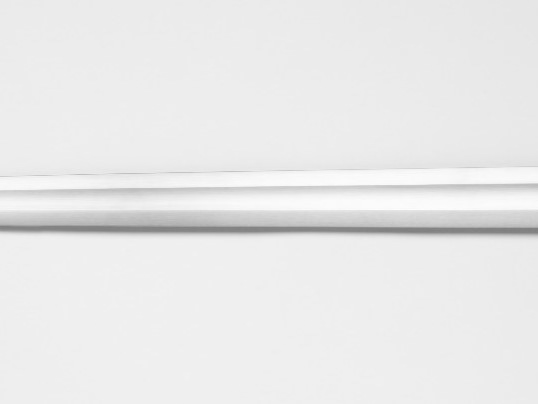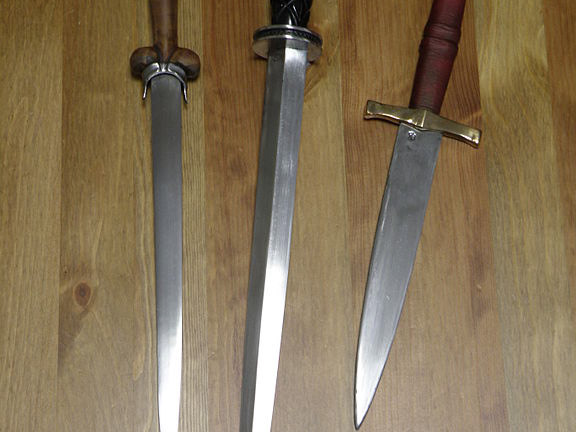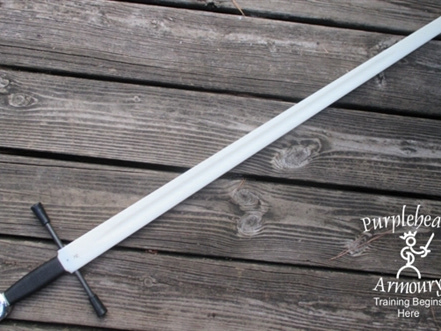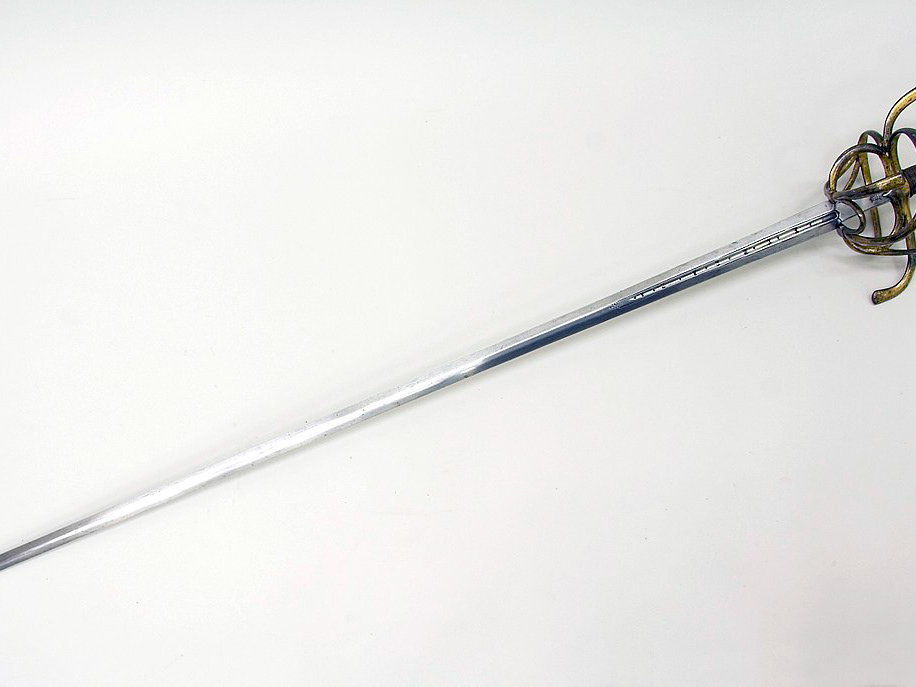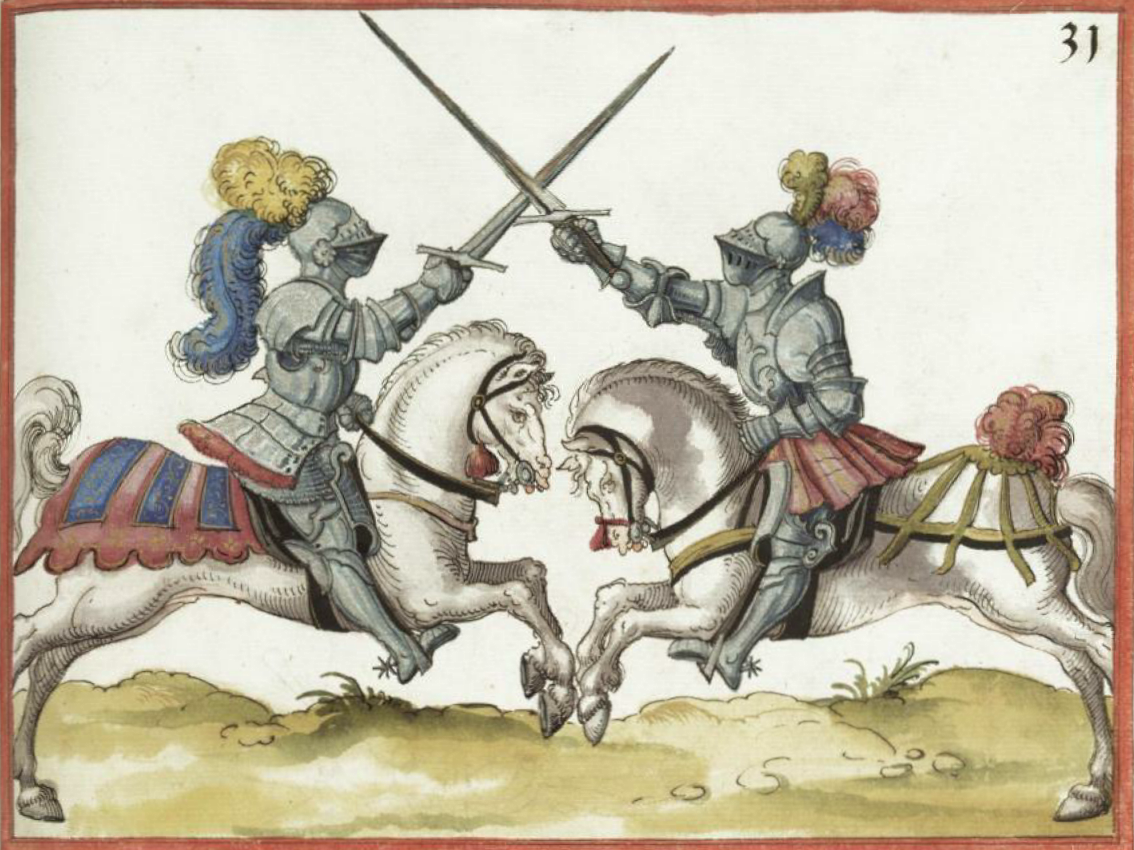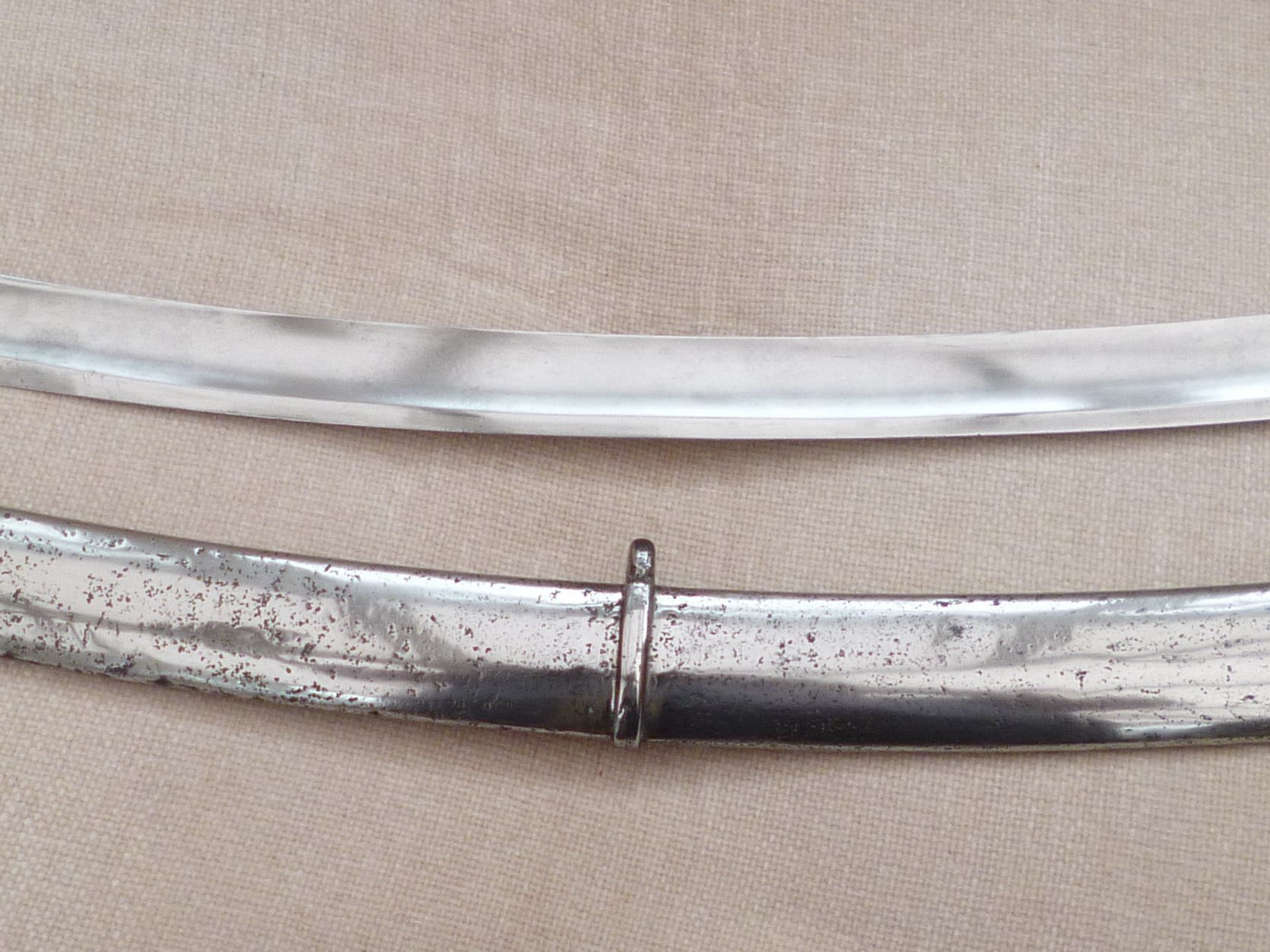A stunning example of a ceremonial french partisan.
Courtesy of Metropolitan Museum of Art. Public Domain.
A breakdown of quarterstaff anatomy.
Courtesy of Nicholas Allen. Public Domain.
One of Meyer's plates that depict multiple techniques at once depicted in his treatise A Thorough Description of the Art of Fencing staff, plate B
Courtesy of Wiktenauer.
This is an example of a winged spearhead used for hunting. The wings on either side of the spearhead were intended to stop the forward momentum of a charging animal, usually a boar, preventing it from goring the hunter.
Courtesy of Metropolitan Museum of Art. Public Domain.
A breakdown of spear anatomy.
Courtesy of The Metropolitan Museum of Art, edited by TOTA. Public Domain.
A man standing on guard, as depicted in Oprea Nova, image 54.
Courtesy of Wiktenauer.
An example of a German halberd head.
Courtesy of Metropolitan Museum of Art. Public Domain.
An example of a french poleaxe.
Courtesy of The Metropolitan Museum of Art. Public Domain.
A breakdown of Poleaxe anatomy.
Courtesy of Nicholas Allen, Public Domain
This shows a death blow to the head with the hammer, featured in Fiore’s Flower of Battle. Fiore notes that “you will likely drop to the ground dead after being struck in the head like this.".
Courtesy of Wiktenauer.
